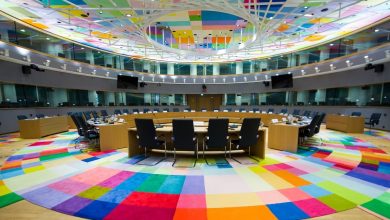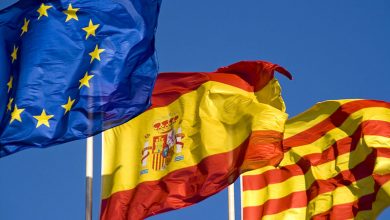The EU Does a Lot for Farmers and Rural Communities – Here’s How

The EU provides plenty of financial support to European businesses, workers, and students. This is a great undertaking with massive consequences for economic growth and quality of life, as well as overall policy goals such as the fight against climate change. Sadly, this financial effort sees little publicity. The EU’s continued positive impact in the economic life of its citizens is consistently under-reported, in spite of the near-existential quality of this impact for some industries and workers. One of the primary beneficiaries of EU financial assistance is the agricultural sector in general, and farmers in particular.
The attitude of rural areas towards the European Union is not particularly positive in several Member States. Different explanations can be given to this phenomenon depending on local and national variants, but there is a general conservative trend in rural areas, due to an extremely critical view of globalisation. Moreover, local institutions face various struggles in the effective deployment of EU agricultural funds, ranging from corruption to misallocation and everything else in between. This is especially true in some Southern European regions. Finally, poor communication results, ironically, in widespread lack of knowledge of the European Union and its agricultural policies among its primary beneficiaries.
Here’s a look at the main instruments and policies developed by the EU to support the continent’s agricultural sector.
The CAP
The common agricultural policy (CAP) is perhaps the most well-known of all agricultural policies in the EU. It promotes the viability and financial sustainability of rural communities through rural development measures. The EU has set three long-term rural development goals for the 2014-2020 period: to encourage competitiveness through the adoption of new technologies and best business practices. To assist the switch to a green, sustainable EU agricultural sector in the ongoing fight against climate change. And finally, to balance territorial development in rural economies through a large-scale works creation programme.
The CAP is not without controversy. Opposed by many as a fundamentally protectionist tool, it has recently come under fire for the lack of climate action conditionalities in the allocation of funds. EU Commissioner for Competition, Vestager, has set her sights on CAP reform from the very first days of the current Commission’s mandate, in an effort to both modernise the industry and forge it into a weapon to fight climate change, as we detailed in this analysis.

Funds managed by local institutions
Some European funds are direct – meaning the EU institutions themselves deploy them according to their criteria, such as in the case of Erasmus+ grants. Most funds, however, are indirect, and thus managed at the Member State level – and sometimes, the local level directly. For agriculture, fund oversight is under the coordination of the European Agricultural Fund for Rural Development (EAFRD). European Regions also play a role, in coordination with the European Regional Development Fund (ERDF). Rural development funds see distribution through so-called Rural Development Programs (RDPs). Another important source of investments is the European Fund for the Competitiveness of Enterprises and SMEs (COSME).
While the ERDF and COSME support the world of SMEs in general, the EAFRD is a tool that specifically helps agricultural interventions, including the creation and development of new businesses. It’s a particularly effective policy, with cascading consequences for growth in all of the EU’s rural areas.
Networks and farmers partnerships
European policy decisions are not made in a vacuum. Businesses, workers, and other stakeholders are continually consulted to ensure coordination between the political world and civil society. For agriculture, one such tool is the European Rural Development Network (ENRD).
This Network is an information platform for rural development policies, plans, projects, and other initiatives. The purpose is to reach out and include as many businesses and professionals as possible, and draft policies close to the needs of farmers and communities. The Network supports the efficient implementation of the aforementioned Rural Development Programmes, by creating and sharing knowledge. The exchange of information and collaboration throughout rural Europe is one of the primary engines of growth and business development in the industry.
However, knowledge-sharing is all the more effective when paired with innovation. To this purpose, the EU has introduced the European Partnership for Agricultural Productivity and Sustainability Innovation (PEI-AGRI). This Partnership also encourages rural development goals, specifically by supporting innovation in agriculture and rural communities. PEI-AGRI exists to bridge the gap between the innovative solutions coming out of universities and research labs, and their adoption by the wider farmers’ communities.
Direct funds to farmers
As mentioned, some funds are under the direct control of the European Union and its institutions. These direct funds see allocation through specific calls prompting candidacies, covering a diverse array of potential beneficiaries. Among them is the agricultural sector, which sees a robust share of calls and funds. While some of these are generic and available to most agricultural activities, a few select calls cover very specific programmes. As part of my experience with European Projects Consultancy Company “Area Europa”, I have witnessed first-hand how EU funds are changing the economy. The push towards low-carbon agriculture wouldn’t be possible without access to European direct funds.

Horizon 2020 is the largest EU programme for research and innovation, and deserves a mention on this list. The programme aims to develop the European Research Area (ERA) by harmonising national research policies. Horizon 2020 is also implementing the EU’s environmental research and innovation policy to complete the continent’s transition to a green, sustainable economy. This includes funds to research on sustainable agriculture and rural development, with an eye to forestry as well.
Horizon 2020 will be followed by the European Framework Programme for Research and Innovation 2021/2027 Horizon Europe (HEU). With a budget of around € 100 billion, it is the most ambitious European research and innovation programme in the history of European integration. Given the full involvement of Member States’ ministries and universities, Horizon has a significant impact on national policies. The same size and popularity of the programme, however, places considerable barriers of entry for smaller projects without key institutional partners.
Where Horizon focuses on research, LIFE is focused on implementation instead. Products and practices developed thanks to Horizon funds can therefore see widespread testing by farmers and communities through LIFE funds. This programme is all about preserving the environment, natural habitats, and biodiversity. In practice, this usually means finding a way for nature and agriculture to coexist – placing ever greater emphasis on the efficient and sustainable use of natural resources. Reducing pollution and emissions, as well as mobilising against climate change, are very much the target of a campaign to introduce more effective circular economy-based systems.
LIFE is perfect for close-to-market projects. This is a very crucial point that leads to an immediate and concrete impact. It’s also one of the most competitive European Programmes, with strong participation and competition for the available grants.
Finally and most famously, Erasmus+ is the EU’s education, training, youth and sports programme. It is incredibly extensive, as it brings together in a single framework a large number of different activities. It is divided into Key Actions according to the type of action which is supported. This means in turn that the effectiveness of any given Erasmus+ undertaking depends on the specific project. In the context of agriculture, a Key Action 1 project might help disseminate knowledge about permaculture or rural development. A project based on Key Action 2 can instead include internships and be, therefore, more based on innovative practices for farmers or agronomists.
Erasmus + is undoubtedly the most varied EU-financed programme, with the widest range of opportunity for all applicants – in this case, farmers and rural communities. The existence of Key Actions allows an incredibly diverse array of projects to see review and examination by EU institutions. However, it is generally not a close-to-market programme, so results can look less tangible – even though they can have an essential role in the definition of new politics.





